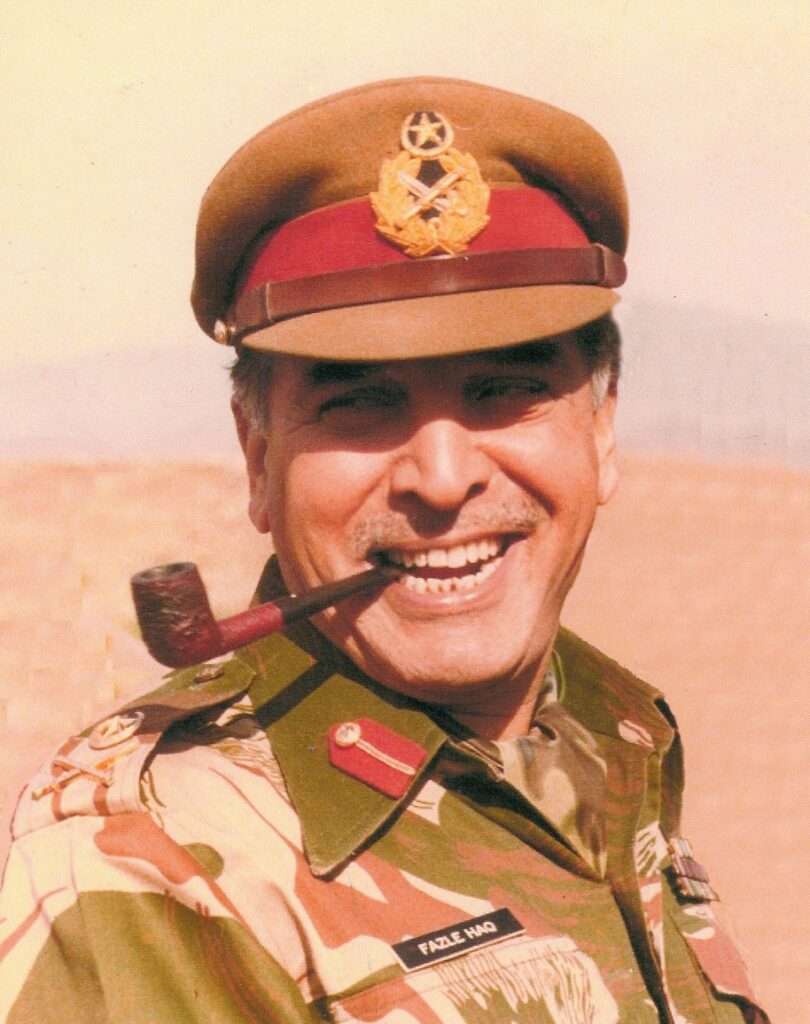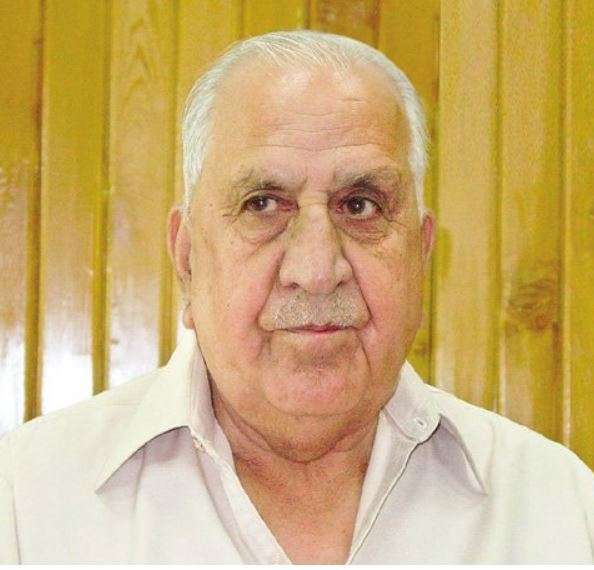“What has to be done for the country has to be done”. Major General Naseerullah Khan Babar
In 1922, Prince of Wales Royal Indian Military College (RIMC) was established at Dehra Dun to provide education to Indians mirroring British public schools. RIMC was established to provide education and training to Indian boys to qualify them for further training at Royal Military College at Sandhurst for military career as officers. RIMC was established at the site of old Imperial Cadet Corps (ICC) that was designed to educate scions of princely families and landed aristocracy therefore it was nick named Rajwara Camp.
RIMC was designed to provide education and prepare young lads for a military career. RIMC produced future generation of Indian and Pakistani armies. Old boys of RIMC are called Rimcollians. In 1931, a ten year old Pathan lad walked on crutches as he had broken his leg in a football match in the office of the local district commander for an interview. Two months later, the same lad entered the office of Agent to Governor General (AGG) for an interview but this time his face was swollen from stings of a swarm of hornets. After clearing these hurdles, he entered RIMC (1932-41- Roberts section) and excelled in football and boxing. Nine years later, he entered Indian Military Academy (IMA) at Dehra Dun and commissioned in 9th Battalion of 13 Frontier Force Rifles. The lad’s name was Gul Hassan who rose to the rank of Lieutenant General and C-in-C of Pakistan army in 1972.
A number of officers of Pakistan army and air force were Rimcollians. They were pioneers of armed forces of newly independent Pakistan. Founding fathers of Pakistan Air Force; Air Marshal Asghar Khan and Air Marshal Malik Nur Khan were Rimcollians. Asghar Khan was commissioned from IMA Dehra Dun and soon joined newly established Royal Indian Air Force (RIAF). In 1947, he came to Pakistan and was instrumental in establishing infrastructure of a modern Pakistan Air Force (PAF). In 1957, at the age of thirty six, he became the youngest air force chief. In the next eight years, he saw the modernization of air force and when he left, PAF was one of the best air forces of the world. Nur Khan nick named ‘Nuru’ by his school friends first attended Colonel Brown school in Dehra Dun and later transferred to RIMC (1934-40 – Rawlinson). He was Pakistan air force chief from 1965-69. He was administrator par excellence and when given charge, took the organization to new levels of excellence. He was head of Pakistan International Airlines (PIA), Pakistan Cricket Board (PCB) and Pakistan Hockey Federation (PHF). Air Vice Marshal Sadruddin is a fine officer and gentleman. He was at the forefront of modernization of Pakistan Air Force. He was head of the program for induction of F-104 fighter aircraft and brought first batch of these aircrafts from United States. After 1965 war, when United States stopped supplies of weapon systems, Pakistan approached China for military hardware. In October 1966, then Wing Commander Sadruddin took thirteen PAF pilots to China to train on F-6 fighter aircraft. Two months later, these pilots came back to form the nucleus of No 23 Squadron flying F-6.
Lieutenant General Mohammad Yusuf Afridi nick named ‘Joe’ was a Rimcollian. He was commissioned from Sandhurst in 1929 and joined 7th Light Cavalry. He served at several important posts in Pakistan army. He raised 12th Division, commanded 14th and 7th Division and 9th Division and served as Chief of General Staff (CGS). He holds the record of commanding four infantry divisions. In February 1954, he became the founder president of Rimcollian old boys association of Pakistan.
Two brothers Ahmad Jan and Khalid Jan were among the first batch of RIMC. They were grandsons of legendary Colonel Sir Muhammad Aslam Khan of Khyber Rifles fame and sons of Brigadier Sir Hissamuddin Khan. Ahmad Jan was in Roberts section in 1922-23. He was commissioned from Sandhurst in 1927 and joined 7th Light Cavalry. In August 1947, he commanded First Battalion of 14th Punjab Regiment (now 5 Punjab). In 1950, he took command of Frontier Corps as first Pakistani Inspector General Frontier Corps (IGFC). He retired as Brigadier in Pakistan army. Khalid Jan was at RIMC from 1922-26. He was commissioned from Sandhurst in 1928 and joined 16th Light Cavalry. In October 1947, he was the first Pakistani to command Fist Battalion of 12th Frontier Force Regiment (now 3 FF). He retired at the rank of Colonel. Brigadier Mukhtar Karim holds a unique honor of serving in all three services. After graduating from RIMC, he joined Indian Air Force and later joined Indian Navy. His father wanted him to join army therefore he entered IMA Dehra Dun. The passing out parade of Karim’s batch was scheduled for December 1947. Partition of India in August 1947 divided everything. In October 1947, Cadet Karim was flown to Pakistan where he was commissioned. He joined artillery but later became the pioneer of Pakistan army aviation. He spent his retired life in hot air balloons.
Two brothers; scions of the house of Najibabad entered the doors of RIMC not knowing where the road of life will take them. Sahabzada Muhammad Yaqub Khan left the gates of RIMC and entered IMA next door. He was commissioned in 18th King Edward’s Own Cavalry and joined the proud Jat Squadron. During Second War, he was prisoner of war and during captivity learned Italian and German languages of his captors. Later, he served with many elite regiments including Viceroy’s Body Guards, Governor General’s Body Guards, 11th Prince Albert Victor’s Own (PAVO) Cavalry and First Battalion of 1 Punjab Regiment (now 1 Punjab). He opted for Pakistan and left his mark on Pakistan army. Yaqub is pioneer of starting the intellectual life in Pakistan army. He served as Director General Armored Corps, GOC 6th Armored Division, Commandant of Staff College, Chief of General Staff (CGS) and Corps Commander of East Pakistan. As Commandant of Staff College at Quetta, he introduced Pakistani officers to the higher direction of war. He was also instrumental in establishment of National Defence College (now National Defence University) with its two tiered course. After leaving army, his next reincarnation was a diplomat and as expected he excelled in this filed. He served as ambassador to several important countries and completed his diplomatic career as Foreign Minister of Pakistan.
Yaqub’s elder brother Sahabzada Muhammad Yunus Khan was commissioned in Indian army from Officers Training School (OTS) at Bangalore and served with Garhwal Rifles. In 1947, Yunus opted for Indian army. Immediately after independence, India and Pakistan went to war in Kashmir. Yaqub was sent by Pakistan army while Yunus was sent to the same theatre by Indian army. Later, Yunus served as Deputy Military Secretary to President of India and retired at the rank of Colonel.
Major General Naseerullah Khan Babar was at RIMC at the time of partition in 1947. He joined the first batch of officers trained at newly established Pakistani Military Academy (PMA) at Kakul. He opted for artillery (4th Field Artillery Regiment) after passing out but later joined army aviation. He participated in 1965 and 1971 wars winning a Sitara-e-Jurat (SJ) in 1965 and a Bar to his SJ in 1971. He served as Inspector General of Frontier Corps (IGFC) in early 1970s. He retired in 1976 to become Governor of North West Frontier Province (1976-1977). He later joined Pakistan People’s Party (PPP) and served as special advisor (1988-1990) and Interior Minister (1993-1996) during Prime Minister Benazir Bhutto’s governments in 1990s.

The list of Rimcollians who opted for Pakistan include Lieutenant General Fazal –e- Haq (Guides Cavalry) who served as Corps Commander and Governor of North West Frontier Province, Major General Anwar Hussain, Major General Naseer Ahmad (served Pakistan’s Defence Attaché to New Delhi and in 1965 war commanded First Armored Division), Major General Muhammad Mumtaz Khan, Major General Wisal Muhammad Khan (commissioned in 2/8 Punjab; now 2 Baloch and commanded 5/8 Punjab; now 5 Baloch), Brigadier Khan Ata Muhammad Khan (1/14 Punjab) and Brigadier ‘Tommy’ Masud Khan (7th Light Cavalry & 11th PAVO Cavalry), Brigadier Hamid Hussain (5/11 Sikh Regiment), Brigadier Riaz ul Karim (5th Probyn’s Horse who won his MC in Burma), Brigadier Faqir Muhammad Khan and Colonel Zarif Khan (commissioned in 3/16 Punjab Regiment and won his MC in Burma). Shayaryar Khan; scion of the princely house of Kurwai was also a Rimcollian. He came with his mother to Pakistan, joined foreign service and retired as Foreign Secretary. He is currently Chairman of Pakistan Cricket Board.
The Rimcollians list includes one of the most decorated Indian officers of British Indian army Taj Muhammad Khanzada. He was commissioned in 5/11 Sikh Regiment and won DSO and MC in Waziristan and Burma. During Japanese captivity, he joined Indian National Army (INA) and put in charge of special service group. After Japanese surrender, he was removed from army when he was Captain.
Scions of Chitral’s princely family favored RIMC. Colonel Burhanuddin attended RIMC from 1926-33. He was commissioned in 2nd Battalion of 10th Baloch Regiment. He was seconded to Royal Indian Air Force and served with No: 1 Squadron in Razmak and Karachi. There are many interesting stories about this chap. During war, he reverted back to his battalion and captured by Japanese. He joined INA and after Japanese defeat brought to India and court martialed. The President of Field General Court Martial was Brigadier (later General) Cariappa nick named ‘Kipper’. After sentencing Burhanuddin to seven years imprisonment, Kipper went over and shook hands with him which raised many eyebrows. Burhanuddin’s three brothers; Colonel Mata ul Mulk (15 Punjab Regiment), Khushwaqt ul Mulk (4/19 Hyderabad Regiment) and Khusro ul Mulk (11 Punjab) were also Romcollians. In view of long history of fratricide in princely family of Chitral, RIMC probably saved some royal lives.
After gaining independence, the name of college was changed to Rashtriya Indian Military College and the names of three sections; Rawlinson, Roberts and Kitchener changed to Pratap, Ranjit Singh and Shivaji. In India and Pakistan, institutions and roads named after British personalities have been changed after independence. I’m not in favor of this exercise. Many fine British military and civil officers laid the foundations of some great institutions that trained generations of equally good Indian and Pakistani officers. By honoring and remembering these pioneers, both countries honor themselves. After independence both countries established numerous institutions and they can name these institutions after their historical and contemporary native heroes.
RIMC was one of the first schools established along British public school lines and produced some fine officers and gentlemen of India and Pakistan. A brotherhood was established in the boyhood among young lads of different ethnicities and religions. They fought as comrades against King’s enemies in Second World War. After independence, they were now officers in rival armies and in 1965 and 1971 wars fought against each other as senior officers of their respective armies. At reunions, they crossed the borders to hug each other and reminisce about beautiful days of boyhood. Rimcollians strived to live up to the college’s original motto Ich Dien (l serve) on both sides of the border.
“The day when Rimcollians rule in both countries, the problems between them will disappear”. Captain ® Taj Muhammad Khanzada
Notes
Bikram Singh & Sidharth Mishra (Ed.). Where Gallantry is Tradition: Saga of RIMC (Delhi: Allied Publishers), 1997
Memoirs of Lt. Gen. Gul Hassan (Karachi: Oxford University Press), 1993
Wing Commander ® Sardar Ahmad Shah Jan. Saddozai: Saddozai Kings & Vaziers of Afghanistan 1747-1842. Peshawar: Public Art Press, 2007
Acknowledgement
Author thanks Brigadier ChandarThapa and Colonel Ali Ahmad Zaki of Indian army, Major General Syed Ali Hamid of Pakistan army and Air Commodore Sajjad Haider and Wing Commander Sardar Ahmad Shah Jan of Pakistan Air Force for providing details about many officers.





